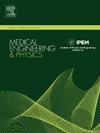A robust method for parkinson's disease diagnosis: Combining electroencephalography signal features with reconstructed phase space images
IF 1.7
4区 医学
Q3 ENGINEERING, BIOMEDICAL
引用次数: 0
Abstract
Parkinson's disease (PD) is a neurodegenerative disease. Since the diagnosis of the PD is mainly made based on the symptoms and after the disease progression, early diagnosis can play a crucial role in delaying the passage of the PD. There have been many methods focusing on disease diagnosis using electroencephalography (EEG) signals, where most of the proposed methods are data-dependent. Here, the study aims to propose a technique that, despite its high accuracy, is robust. Various features including fractal dimension, approximate entropy, largest Lyapunov exponent, and the energy of different frequency sub-bands were extracted from EEG signals. Multi-layer perceptron neural networks were used for classification based on these features. Additionally, 2D phase space images reconstructed from EEG signals were classified using convolutional neural networks. Finally, a combination of these features and images was used for classification using ResNets. During 10 rounds of training and testing, the mean accuracies were calculated for three cases: using only features, only images, and a combination of both. The mean accuracies were 84.67 %, 76.5 %, and 90.2 % respectively. The variances for each case were 35.6 %, 19.5 %, and 13.97 %. The lower variance when using a combination of features and images indicates a more accurate and robust classification.
脑电信号特征与重构相空间图像相结合的帕金森病鲁棒诊断方法
帕金森病(PD)是一种神经退行性疾病。由于PD的诊断主要是根据症状和病情进展进行的,因此早期诊断对于延缓PD的通过起着至关重要的作用。目前已有许多方法关注于利用脑电图(EEG)信号进行疾病诊断,其中大多数提出的方法是数据依赖的。在这里,这项研究旨在提出一种技术,尽管它的准确性很高,但它是稳健的。从脑电信号中提取分形维数、近似熵、最大李雅普诺夫指数和不同频率子带能量等特征。基于这些特征,采用多层感知器神经网络进行分类。此外,利用卷积神经网络对脑电信号重构的二维相空间图像进行分类。最后,结合这些特征和图像使用ResNets进行分类。在10轮训练和测试中,计算了三种情况下的平均准确率:仅使用特征,仅使用图像,以及两者的组合。平均准确率分别为84.67%、76.5%和90.2%。各病例的方差分别为35.6%、19.5%和13.97%。结合使用特征和图像时,方差越小,分类越准确,鲁棒性越强。
本文章由计算机程序翻译,如有差异,请以英文原文为准。
求助全文
约1分钟内获得全文
求助全文
来源期刊

Medical Engineering & Physics
工程技术-工程:生物医学
CiteScore
4.30
自引率
4.50%
发文量
172
审稿时长
3.0 months
期刊介绍:
Medical Engineering & Physics provides a forum for the publication of the latest developments in biomedical engineering, and reflects the essential multidisciplinary nature of the subject. The journal publishes in-depth critical reviews, scientific papers and technical notes. Our focus encompasses the application of the basic principles of physics and engineering to the development of medical devices and technology, with the ultimate aim of producing improvements in the quality of health care.Topics covered include biomechanics, biomaterials, mechanobiology, rehabilitation engineering, biomedical signal processing and medical device development. Medical Engineering & Physics aims to keep both engineers and clinicians abreast of the latest applications of technology to health care.
 求助内容:
求助内容: 应助结果提醒方式:
应助结果提醒方式:


